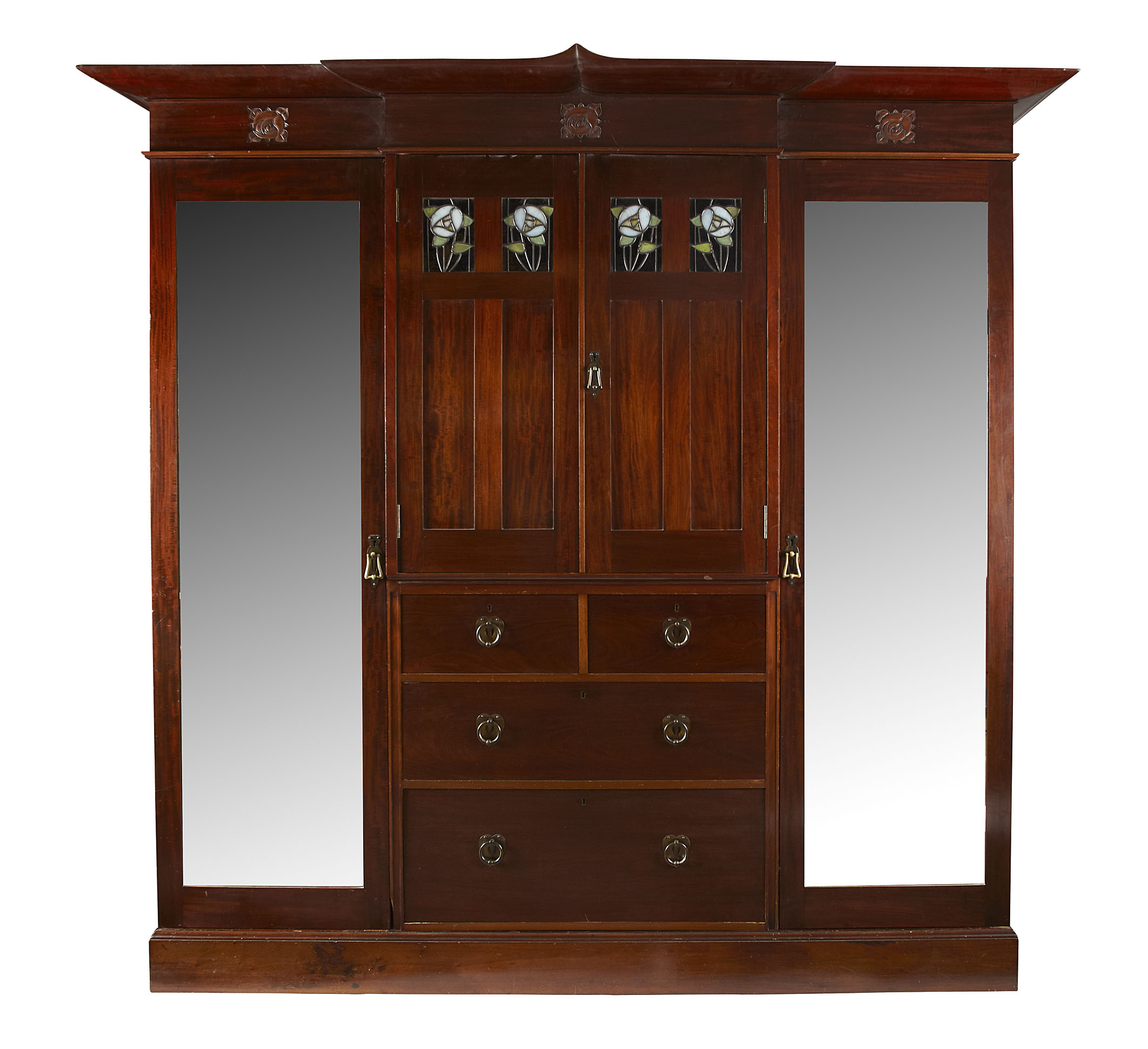ERNEST ARCHIBALD TAYLOR (1874-1951) FOR WYLIE & LOCHHEAD, GLASGOW
MAHOGANY BEDROOM SUITE, CIRCA 1900
£2,200
Auction: 15 June 2011 at 12:00 BST
Description
comprising a wardrobe, the projecting cornice above a frieze carved with Glasgow roses in bas relief, above two central doors each inset with two stained and leaded glass panels depicting Glasgow roses, over two short over two long drawers and flanked by mirrored doors raised on a plinth base, 222cm wide, 64cm deep; also a MATCHING WASHSTAND, with tiled rectangular top above twin panelled doors with corresponding carved Glasgow roses, 121cm wide, 77cm high, 56cm deep; a BEDSIDE CABINET, with three quarter gallery above a single panelled door on square legs linked by stretchers; and a WALL MIRROR, to match (formerly from a dressing table), 67cm wide x 106cm high (4)
Footnote
Note: E.A. Taylor was born in Greenock, Scotland, one of seventeen children. He was initially apprenticed as an engineer and designer in the shipbuilding firm Scott and Co, working there until 1898. He then began studying at the Glasgow School of Art, where his fiancée, Jessie Marion King, was also a student. Taylor began work as an interior designer, being particularly influenced by the stained glass and furniture designs of Charles Rennie Mackintosh.
He gained employment with the Glasgow cabinet-makers, Wylie and Lochhead, winning great acclaim for his furniture at the 1901 Glasgow International Exhibition. This brought him two major commissions, where he made prominent use of stained glass in his interiors. In 1902, Taylor and King worked together on a series of stained glass panels for the Turin International Exhibition of Modern Decorative Art and, by 1907, Taylor was working as head of furniture design at Wragge and Co, marrying King the following year. The couple then began concentrating on art, moving to Paris where they established an art school known as the Shieling atelier.
Prior to her marriage, Jessie M King had purchased a house at Kirkcudbright, and at the outbreak of World War I she and Taylor returned there. Here, they became involved in the Kirkcudbright art community, which was seen as the “Scottish St Ives.” Taylor continued to play a major part in the Kirkcudbright art scene until his death in 1951

